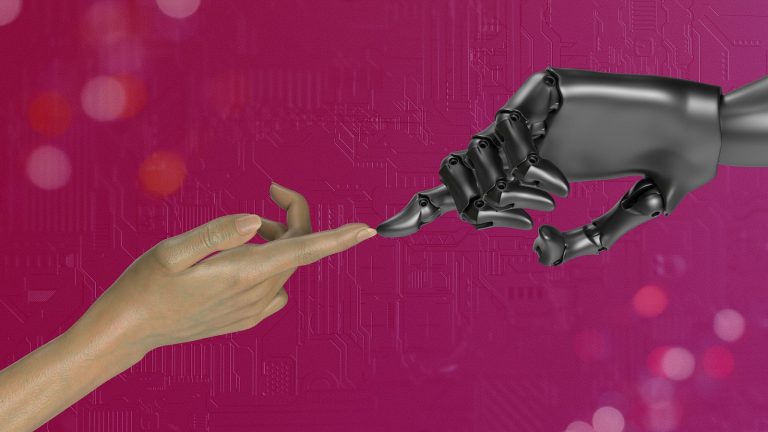
Your thermostat knows electricity costs three times more at 6 PM than it does at 2 AM. Your solar panels are generating more power than you need right now. Your neighbor’s electric car needs a charge and your battery has excess capacity to sell.
But nothing happens. Your devices sit there with perfect information, optimal strategies mapped out, and absolutely zero ability to act on any of it. They’re like financial analysts locked in a room with no phone, no computer, no way to actually execute the trades they recommend.
This is the reality of most “intelligent” systems today. They’re smart enough to know what should happen. They just can’t make it happen.
Beyond Recommendations Into Action
Walk through what most smart home systems actually do. They monitor your energy usage. They learn your patterns. They send you alerts about opportunities to save money. Some will even adjust your temperature settings automatically based on occupancy and weather forecasts.
Helpful? Sure. But compare that to what they could do with actual economic agency. Your home energy system could participate in wholesale electricity markets, buying when prices crater at night and selling back to the grid during peak afternoon demand. It could trade directly with neighboring homes, purchasing their excess solar generation when it’s cheaper than grid power. It could rent out battery capacity to utility companies for grid stabilization services.
The difference isn’t incremental. It’s the gap between a system that informs and one that performs.
Consider autonomous delivery robots navigating city streets. Right now, these machines can map optimal routes, avoid obstacles, and reach destinations efficiently. Impressive engineering. But they can’t pay a building to use its freight elevator. They can’t compensate a business for temporary package storage. They can’t purchase right-of-way access through private property when it would save twenty minutes.
Every one of these scenarios requires a human somewhere to process a payment, approve a charge, or reconcile an account. Which means the robot isn’t really autonomous at all. It’s a sophisticated puppet that still needs someone pulling strings for anything involving money.
The Scale Problem Nobody’s Addressing
Here’s where the current approach breaks down completely. We’re not talking about a handful of devices. Estimates put connected device counts at over 50 billion within the next five years. These aren’t going to be passive sensors. They’re decision-making systems that need to interact economically dozens or hundreds of times per day.
A single autonomous vehicle might need to complete thirty separate financial transactions during a typical day. Paying for charging. Purchasing parking access. Compensating other vehicles for yielding right-of-way. Buying real-time traffic data. Renting temporary storage space. The list goes on.
Multiply that by millions of vehicles and you’re looking at billions of transactions daily. Then add in smart buildings trading climate control services. Drones paying for airspace and landing rights. Industrial robots purchasing raw materials and selling finished goods. Home appliances participating in demand response programs.
The transaction volume is staggering. And every single one of these exchanges needs to happen automatically, instantly, and securely without any human touching it. Traditional payment infrastructure can’t handle this. Not even close.
Credit cards charge fees that make micropayments pointless. Banks move money too slowly for real-time commerce. Both systems are built around human identity verification and fraud prevention that assumes someone is actively monitoring their accounts. None of that works when the economic actors are machines making split-second decisions.
What Devices Actually Need
Standard payment systems fail the device economy for specific, technical reasons. Understanding why helps clarify what’s required instead.
First, devices need to transact in real-time. Not “funds available in 2-3 business days” real-time. Actual instant settlement. When a drone needs to pay for emergency landing clearance, it can’t wait for ACH processing. When a smart building wants to buy cooling capacity from a neighbor, the transaction needs to complete before temperatures rise.
Second, devices need to handle micropayments economically. If a transaction costs 30 cents in processing fees, you can’t use it for payments worth 15 cents. But device economies run on tiny exchanges of value. A few cents for data access. Pennies for temporary resource usage. Fractions of a cent for computation time. The payment infrastructure itself can’t cost more than the value being transferred.
Third, devices need autonomous control without constant human authorization. Your phone can use Apple Pay, but only when you authenticate with your face or fingerprint. That model is fundamentally incompatible with systems that need to make independent economic decisions thousands of times daily.
Fourth, devices need security that doesn’t rely on human judgment. People can spot suspicious charges on their credit card statement and dispute them. Devices can’t. They need transaction frameworks with built-in safeguards, spending limits, and automatic fraud detection that operates algorithmically.
This is the gap that SEALCOIN is designed to fill. Not another payment app for humans. Not another cryptocurrency trying to replace dollars. Instead, infrastructure specifically engineered for autonomous economic agents. Devices and AI systems that need to hold value, make purchases, receive payments, and participate in markets without any human involvement.
When Devices Become Market Participants
Give devices genuine transaction capability and the possibilities expand exponentially. This isn’t about incremental improvements to existing systems. It’s about entirely new economic relationships that are impossible today.
Energy markets provide the clearest example. Right now, you buy electricity from your utility company at rates set by regulators. Simple, straightforward, and incredibly inefficient. Your neighbor might have excess solar power while you’re drawing from the grid. A business down the street might have battery capacity sitting idle while you’re paying peak rates. But there’s no practical way to connect buyers and sellers at local scales.
Devices that can transact change this completely. Your home becomes an active trader in neighborhood energy markets. It monitors prices across dozens of sources simultaneously. It automatically purchases from whoever offers the best rate at any given moment. It sells your excess generation to whoever will pay the most. All of this happens continuously, invisibly, optimally.
Or consider computation and data storage. Your laptop might have processing power sitting idle while someone across town needs to render a video file. Their computer could rent your unused capacity for a few cents. Your security camera generates footage that sits on a hard drive until it’s deleted. Local businesses might pay small amounts to access that footage if it captures their storefronts, helping them analyze foot traffic patterns.
These micro-markets don’t exist because organizing them is harder than the value they create. But when devices can find each other, negotiate terms, and exchange value automatically, the coordination cost drops to nearly zero. Markets emerge wherever they make economic sense.
The Autonomy Question
Giving machines control over money makes people nervous. Understandably so. What prevents a malfunctioning device from spending everything you have? How do you stop hackers from compromising a smart home and draining connected accounts?
These concerns are valid and they’re precisely why device transaction systems can’t just be human payment systems with an API. The security model has to be fundamentally different.
Effective device transaction infrastructure operates on the principle of constrained autonomy. Devices have real independence within carefully defined boundaries. Think of it like giving a teenager their first bank account. They can spend money freely for certain categories, up to certain amounts, during certain times. But they can’t empty the account, transfer funds elsewhere, or exceed their limits without additional permissions.
SEALCOIN implements this through protocol-level controls. Devices don’t just have access to money. They have access to money under specific rules. Maximum transaction sizes. Spending limits per time period. Approved categories of expenses. Geographic restrictions. All of these parameters are set by device owners and enforced cryptographically, not through trust or terms of service.
This creates a system where devices genuinely operate independently but owners maintain ultimate oversight. You’re not hoping your smart home behaves responsibly. You’re ensuring it can only act within boundaries you define. If those boundaries turn out to be too loose, you tighten them. Too restrictive, you expand them. But the device never has uncontrolled access.
Additionally, transaction transparency becomes mandatory rather than optional. Every payment a device makes gets recorded in immutable logs. You can audit activity at any time. Patterns that look suspicious trigger automatic alerts. Anomalies result in temporary freezes until a human reviews what happened.
Security for device economies isn’t about preventing fraud through vigilance. It’s about making fraud structurally difficult through protocol design.
The Future That Can’t Exist Without This
Almost every ambitious vision for connected technology depends on devices having economic agency. Smart cities where infrastructure components trade services with each other. Autonomous transportation networks where vehicles coordinate through market mechanisms. Distributed energy grids where every building is both producer and consumer.
None of this is possible if devices remain economically passive. You can’t have a true sharing economy when humans need to approve every transaction. You can’t have efficient resource allocation when coordination requires manual intervention. You can’t have autonomous systems that still need permission to spend money.
The technology for intelligent devices largely exists. Sensors are cheap and ubiquitous. Connectivity is fast and reliable. Machine learning models can make sophisticated decisions. What’s missing is the economic layer that lets devices act on what they know.
SEALCOIN provides that layer. It’s not trying to reinvent money or replace banking. It’s building the specific infrastructure that autonomous systems need to function economically. Peer-to-peer transactions between devices. Instant settlement. Negligible fees. Cryptographic security. Transparent auditing.
These capabilities transform devices from tools into agents. Your car isn’t just transportation you own. It’s an economic entity that can earn revenue providing services when you’re not using it. Your home isn’t just a place you live. It’s an active participant in resource markets, continuously optimizing for efficiency and profit.
The Line Between Capable and Inert
Technology often looks like it’s advancing smoothly, but really it moves in discrete jumps. For decades, phones were just phones. Then suddenly they were computers. For years, cameras recorded images. Then they connected to the internet and became social media devices.
We’re approaching one of these jumps with connected devices. The difference between a device that can analyze and one that can transact is sharper than it appears. It’s not just additional functionality. It’s a fundamental change in what the device actually is.
A device that can only observe operates in a purely informational space. It consumes data, processes it, and outputs recommendations. Useful, but ultimately limited.
A device that can transact operates in physical reality. It doesn’t just know what should happen. It makes things happen. It doesn’t just suggest optimal strategies. It executes them. It isn’t just intelligent. It’s autonomous in a meaningful sense.
The question facing the industry isn’t whether devices need this capability. Clearly they do, or the entire premise of autonomous systems fails. The question is whether we’re building infrastructure that actually supports device-to-device commerce at the scale and speed required.
Connection gave us the Internet of Things. Intelligence gave us smart devices. Transaction capability gives us economic agents. And that’s not just an evolution of what exists today. It’s the foundation for everything that comes next.


